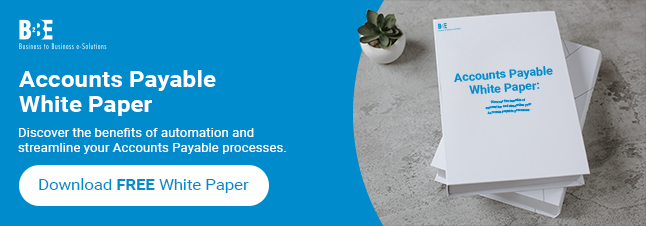Efficient accounts payable processes are critical for maintaining healthy cash flow and strong supplier relationships. One key process in accounts payable is the two way match. It ensures that payments are made accurately and only for goods or services received. This blog will explain how the two way match process works, its benefits, and best practices for implementation.
Introduction to Two Way Matching
De two way match process is a straightforward method used in accounts payable to verify that the invoice amount matches the purchase order (PO) amount before making a payment. This method ensures that companies only pay for what they have ordered and received, preventing discrepancies and errors in financial transactions.
Bekijk onze video hieronder:
How the Two Way Match Process Works
- Purchase Order Creation: The process begins with the creation of a purchase order. The PO outlines the quantity, description, and price of goods or services a company intends to purchase from a supplier. This document serves as a formal request and agreement between the buyer and the supplier.
- Receiving the Goods or Services: Once the goods or services are delivered, the receiving department inspects them to ensure they match the specifications outlined in the purchase order. Any discrepancies are noted and communicated to the supplier for resolution.
- Invoice Receipt and Entry: The supplier sends an invoice detailing the goods or services provided, the quantity, and the total amount due. The accounts payable department receives this invoice and enters it into the accounting system.
- Matching Process: Finally, the two way matching process involves comparing the invoice received from the supplier with the original PO. The system checks that the quantity and price on the invoice match the purchase order. If there is a match, the invoice is approved for payment. If there are discrepancies, they are flagged for further investigation and resolution.
Benefits of the Two Way Match Process
- Improved Accuracy: By ensuring that invoices match purchase orders, the two way match process reduces the likelihood of overpayments, duplicate payments, and paying for items not received. This accuracy helps maintain the integrity of financial records and reduces errors in the accounts payable process.
- Enhanced Financial Control: The two way match process also provides a layer of control over financial transactions, ensuring that payments are only made for authorised purchases. This control helps prevent fraud and unauthorised expenditures, contributing to better financial management.
- Streamlined Processes: Automating the two way match process through an accounts payable system streamlines the verification process, reducing manual intervention and speeding up invoice processing times. This efficiency can lead to faster payments and improved relationships with suppliers.
- Kostenbesparingen: By preventing overpayments and ensuring that payments are made only for received goods or services, the two way match process can also lead to significant cost savings. These savings can be reinvested in the business or used to improve other operational areas.
Conclusie
In conclusion, the two way match process is a crucial component of efficient accounts payable management. By ensuring that invoices match purchase orders, businesses can improve accuracy, enhance financial control, streamline processes, and achieve cost savings. Implementing best practices and automating the process can further enhance these benefits. All of which leads to a more efficient and effective accounts payable function.
Learn more about B2BE’s Two Way Matching solution.
About B2BE
B2BE delivers electronic supply chain solutions globally, helping organisations to better manage their supply chain processes, providing greater levels of visibility, auditability and control. We’re driven by a passion for what we do, inspired by innovation, and underpinned by a wealth of knowledge. With over 20+ years of experience, the B2BE teams operate worldwide.
Ga voor meer informatie naar www.b2be.com.

